Best White Cake Recipe
This White Cake recipe is soft and velvety with perfect vanilla flavor.
Have you ever taken a bite of a beautiful white cake only to be disappointed by it’s rubbery texture and bland taste? With the proper ingredients and mixing technique you can make the best White Cake at home, from scratch.
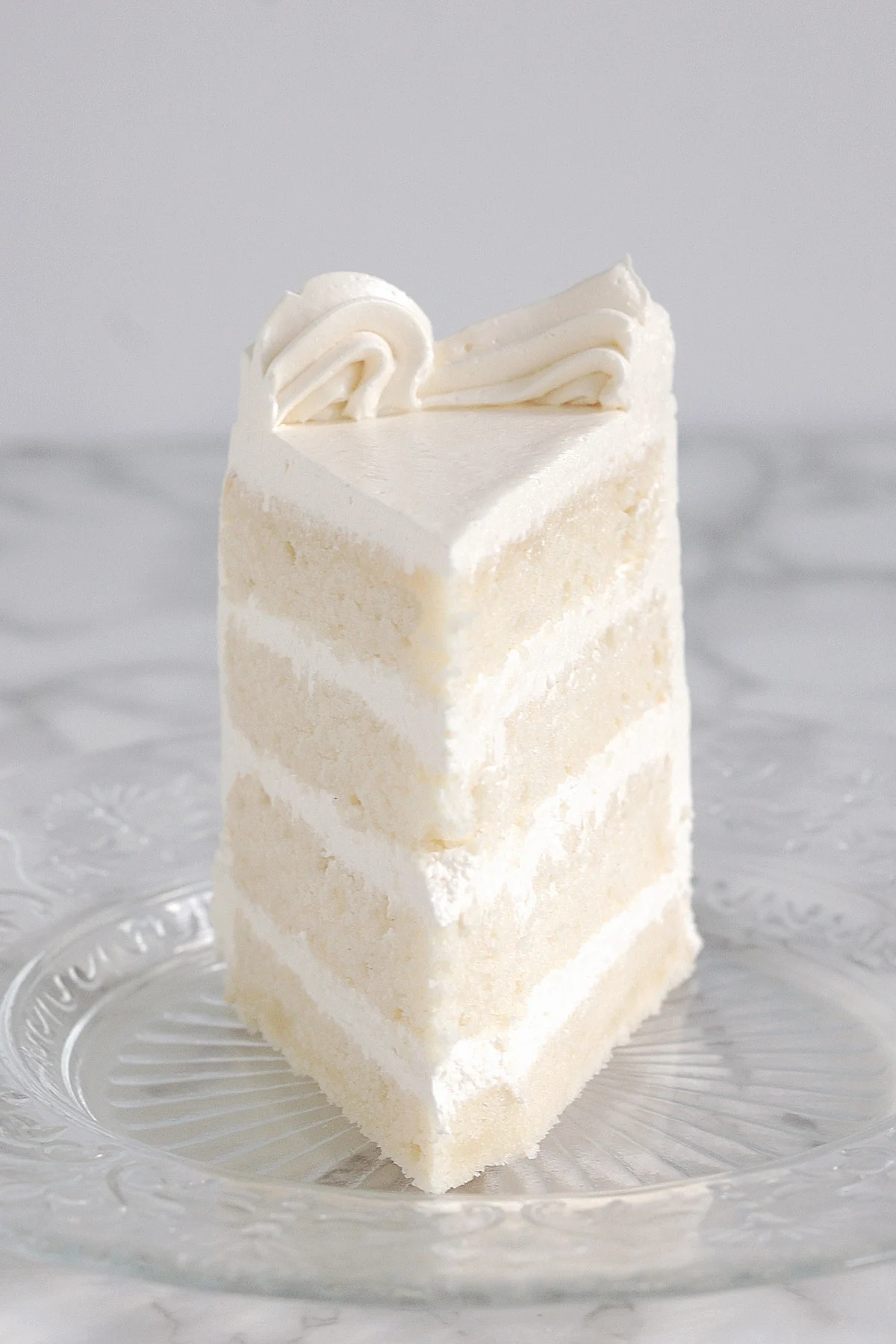
Science behind the recipe
If you’re into baking science and want to learn how I developed and tested this recipe you can visit this post where I explain in detail how I created the best White Cake recipe.
Ingredients
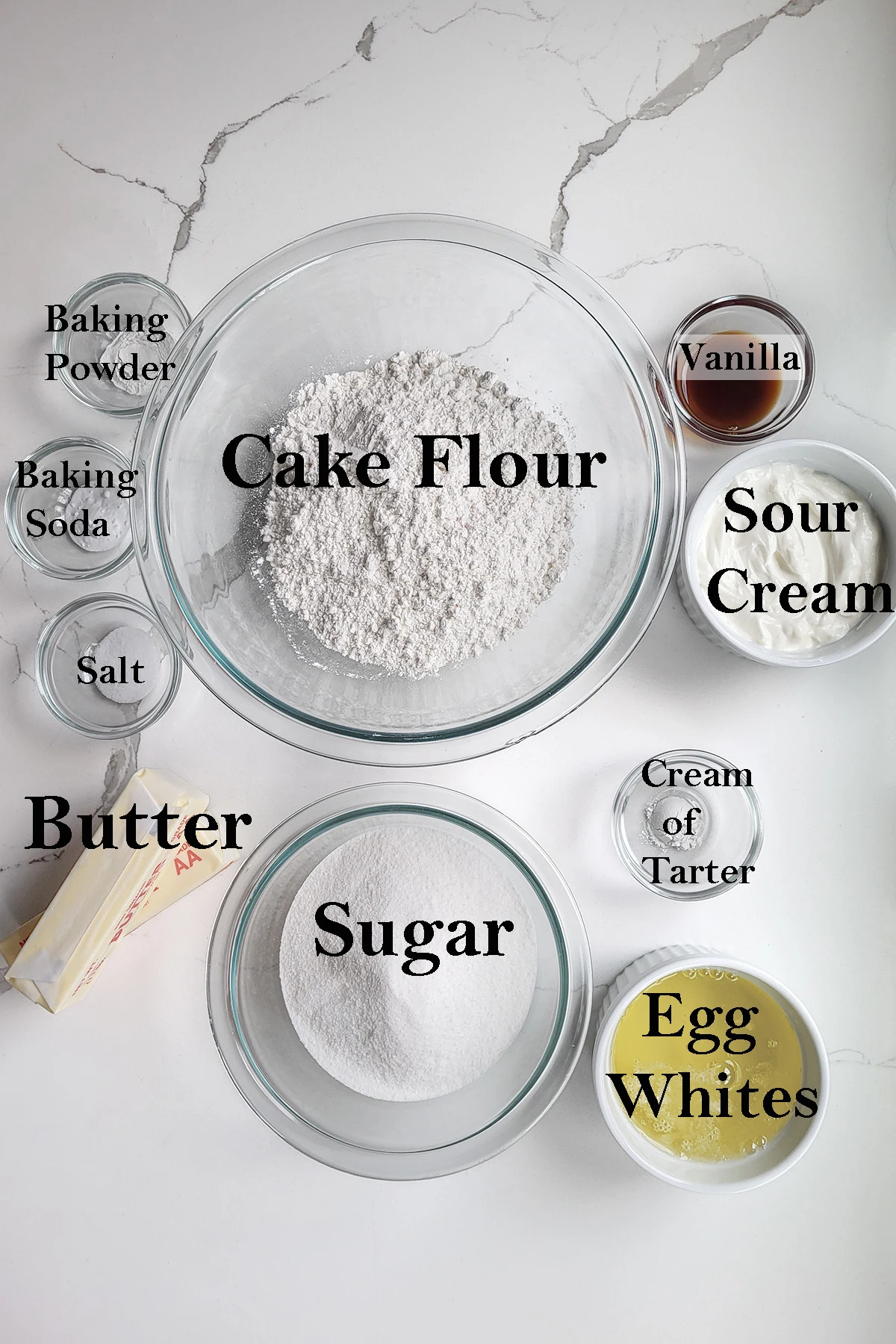
Ingredient Notes
- Cake Flour – I prefer bleached cake flour because it is slightly acidic and whiter in color.
- Sour cream – Sour cream enriches and tenderizes the cake.
- Vanilla extract – Use real vanilla extract for the best flavor. (Alternately, you can use almond extract to make White Almond Sour Cream cake.)
- Egg whites – The main difference between a White Cake and a regular vanilla cake is the absence of yolks in the batter.
- Cream of tartar – Stabilizes the whipped whites.
Process Photos
Here’s what the recipe process looks like at each stage. Refer to the recipe card below for measurements and exact instructions.
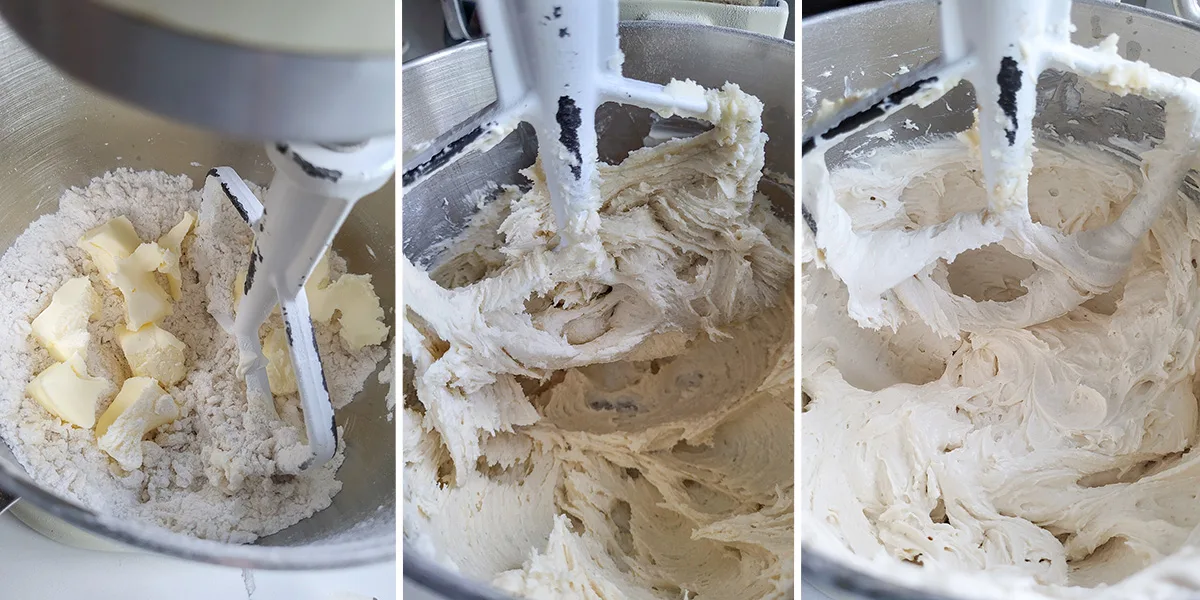
- Sift the dry ingredients into a mixing bowl. Add half the sour cream and combine. Then add the softened butter.
- Mix until the butter is completely incorporated. Scrape down the sides of the bowl.
- Add the remaining sour cream and vanilla and mix on high speed 2-3 minutes to aerate.
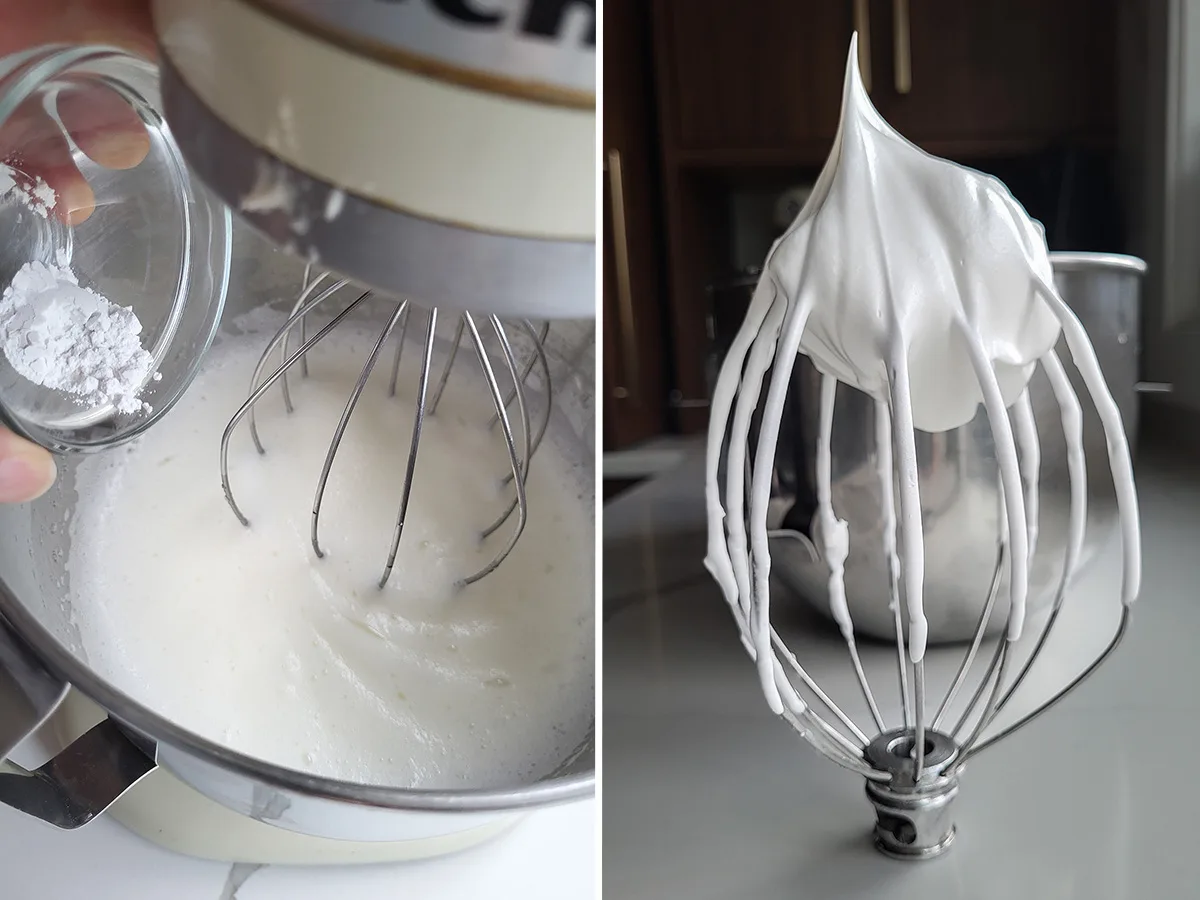
- In a separate bowl, whisk the egg whites with the cream of tarter.
- Add the sugar and whisk to full peak.

- Fold the egg whites into the batter in three batches.
- Fold just until there are no streaks of egg white.
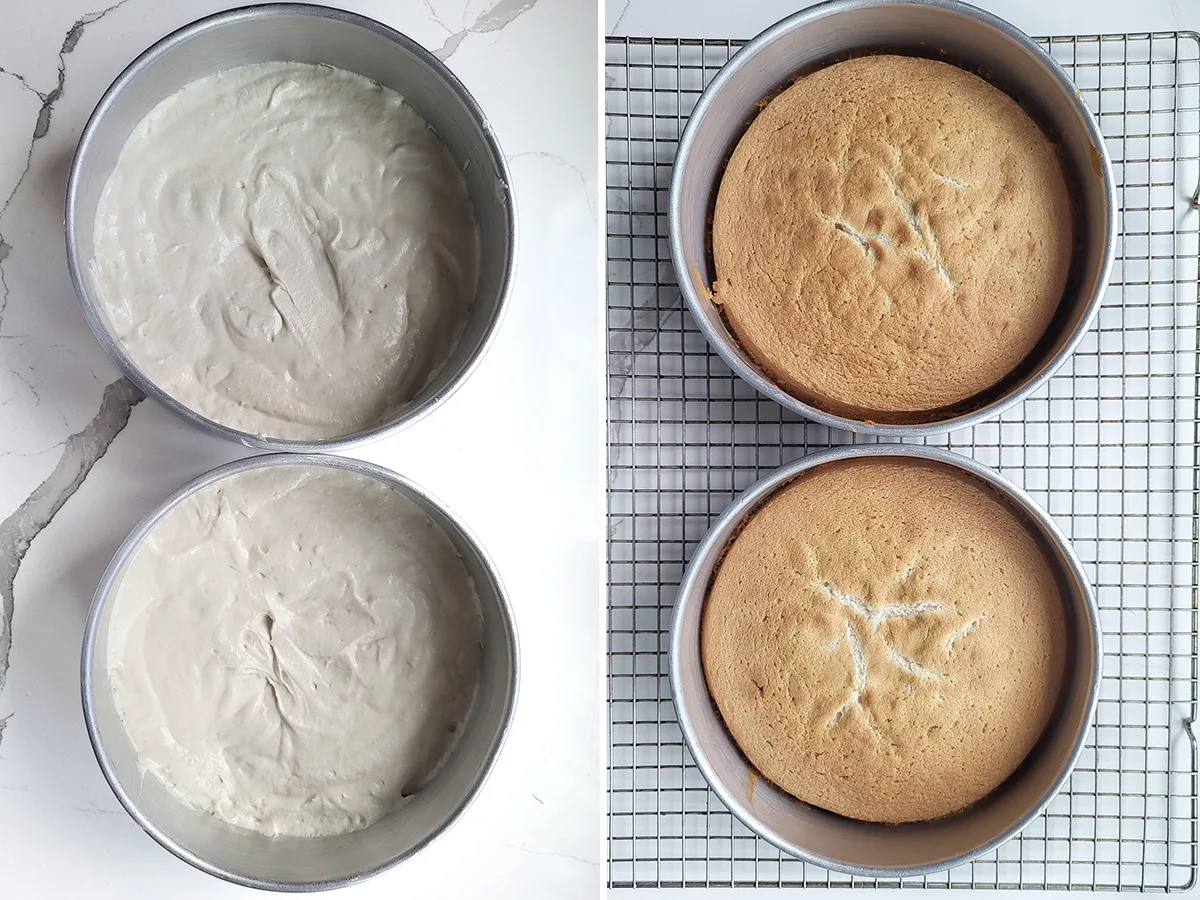
- Divide the batter between two cake pans. Do not butter the sides of the pan or use a non-stick pan.
- Bake until the center of the cake springs back when pressed. Allow the cake to cool completely before frosting.
White Cake Recipe Tips
- Use Room temperature ingredients for the lightest batter. Room temperature butter is between 65°F and 70°F. It should be slightly pliable but not soft and melting.
- Using the “reverse creaming” method to mix the batter makes a soft and fluffy cake. Whipping the whites in the cake also makes the cake soft and fluffy.
- Do not use pasteurized egg whites as they may not whip up properly.
- Do not butter the sides of the cake pan or use a non-stick pan. The cake will rise higher as it clings to the sides of the cake pan. Butter and flour the bottom of the pan or use a round of parchment paper.
- The cake will often “settle” as it comes out of the oven because of the whipped whites in the cake. The soft texture of the cake is well worth the slight shrinking.
- Do not overbake the cake. Remove it from the oven as soon as the cake springs back when the center is pressed.
Storage
- The cake can be kept at room temperature for several days (unless it has a perishable filling).
- If the cake has a perishable filling store it in the refrigerator for up to 3 days.
- Leftover slices of cake can be individually wrapped and frozen for up to 3 months.
- Un-iced, the cake can be wrapped in two layers of plastic wrap and frozen for up to 3 months.
What Frosting Should I Use for My White Cake?
I love to fill and ice Velvety Soft White Cake with snow-white Ermine Frosting. I also recommend Italian Meringue Buttercream, Swiss Meringue Buttercream, Seven Minute Frosting or American Buttercream frosting for this cake.
What the difference between white cake and vanilla cake?
Most of the yellow color in a vanilla cake comes from the egg yolks. White cake is made with only egg whites and no yolks.
Now that you’ve made this recipe what should you do with the extra yolks? Check out this collection of recipes that use extra yolks for some great ideas.
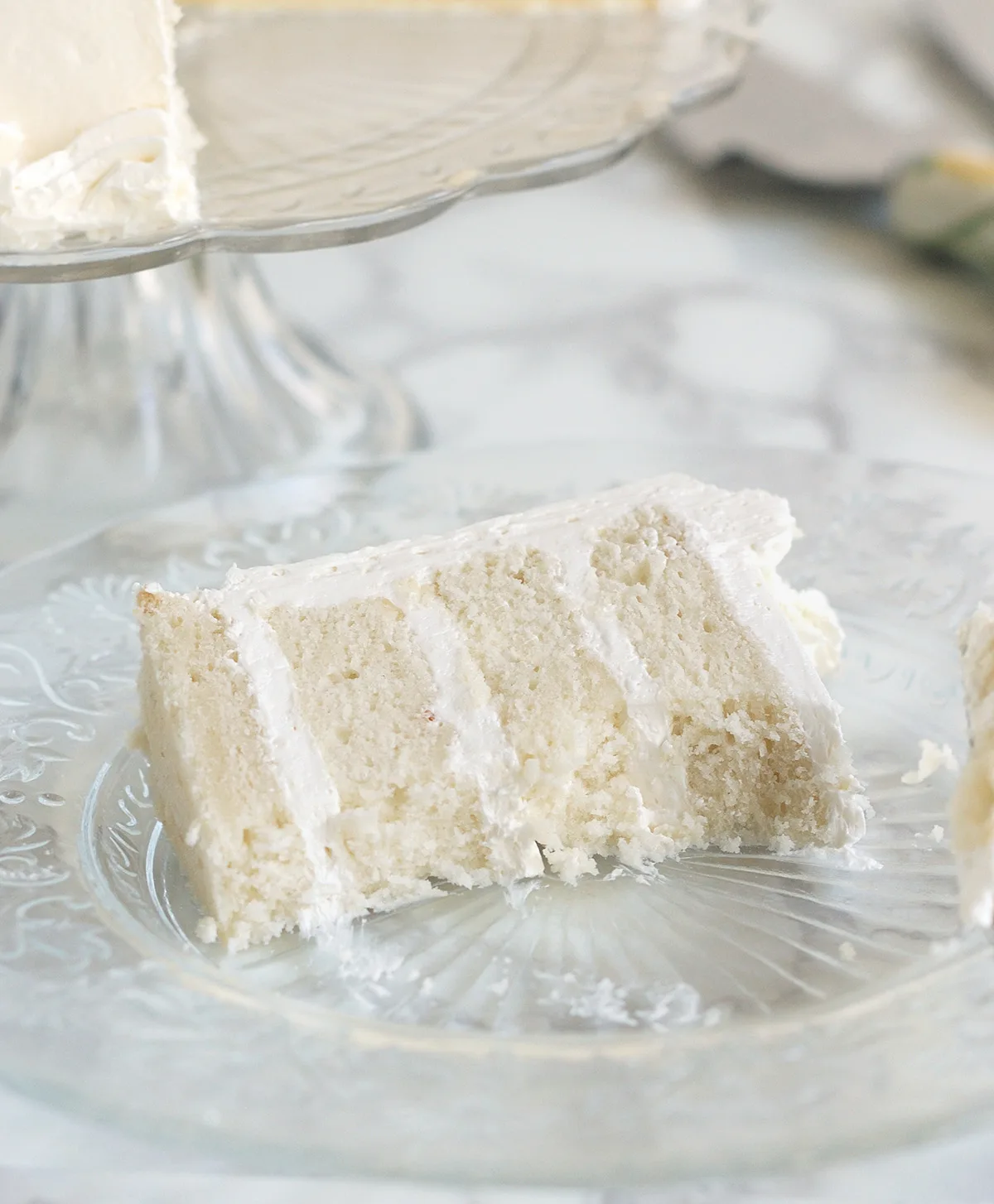
If you love this recipe as much as I do, I’d really appreciate a star rating and a quick comment. Ratings and comments help my recipes show in search results. Thanks!
White Cake Recipe
Video
Ingredients
- 9 ounces cake flour (2 cups, preferably bleached, see note)
- ¾ teaspoon baking powder
- ½ teaspoon baking soda
- ¾ teaspoon salt
- 12 ounces granulated sugar ( 1 ½ cups, divided)
- 8 ounces sour cream (1 cup, room temperature, divided)
- 8 ounces unsalted butter (room temperature (see note))
- 1 tablespoon vanilla extract
- 6 large egg whites (room temperature (see note))
- ½ teaspoon cream of tartar
Instructions
- Preheat the oven to 350 °F. Line two 8"x3" cake pans (don't use non-stick pans) with a circle of parchment paper or butter and flour the bottom of pans only. Do not butter and flour the sides of the pan.
- In a mixing bowl or the bowl of a stand mixer, sift 9 ounces cake flour, ¾ teaspoon baking powder, ½ teaspoon baking soda and ¾ teaspoon salt with 1 cup of the granulated sugar. Mix on low speed for 30 seconds to distribute the leavening. With the mixer on low speed, add half the sour cream and toss in 8 ounces unsalted butter a tablespoon at a time.
- Scrape the sides and bottom of the bowl. With the mixer running on low speed, add the remaining sour cream and 1 tablespoon vanilla extract.
- Increase the speed to medium and beat about 2-3 minutes until the batter lightens in texture and becomes aerated. If your using a hand mixer this may take an extra minute or two. Scrape the sides and bottom of the bowl to make sure there are no pockets of unmixed batter.
- In another bowl, 6 large egg whites with ½ teaspoon cream of tartar on medium high until they form soft peaks. Turn the mixer to medium low and slowly add the remaining ½ cup sugar. Turn the mixer to medium-high and whip the whites to full peak.
- Fold the whites into the base in 3 parts, folding just until there are no streaks of egg white. Divide the batter evenly between the 2 pans and spread to level.
- Bake 25-30 minutes until the center of the cake springs back when lightly pressed or a toothpick inserted into the middle of the cake comes out clean.
- Cool at least 20 minutes in the pan and then turn out onto a cooling rack. **The cake will "settle" a bit as it cools. That's fine.**
- Trim the brown edges off the cake, split each cake into two layers. Fill and ice with your favorite frosting.
Would you like to save this recipe?
Equipment
As an Amazon Associate and member of other affiliate programs, I earn from qualifying purchases.



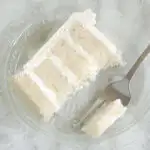






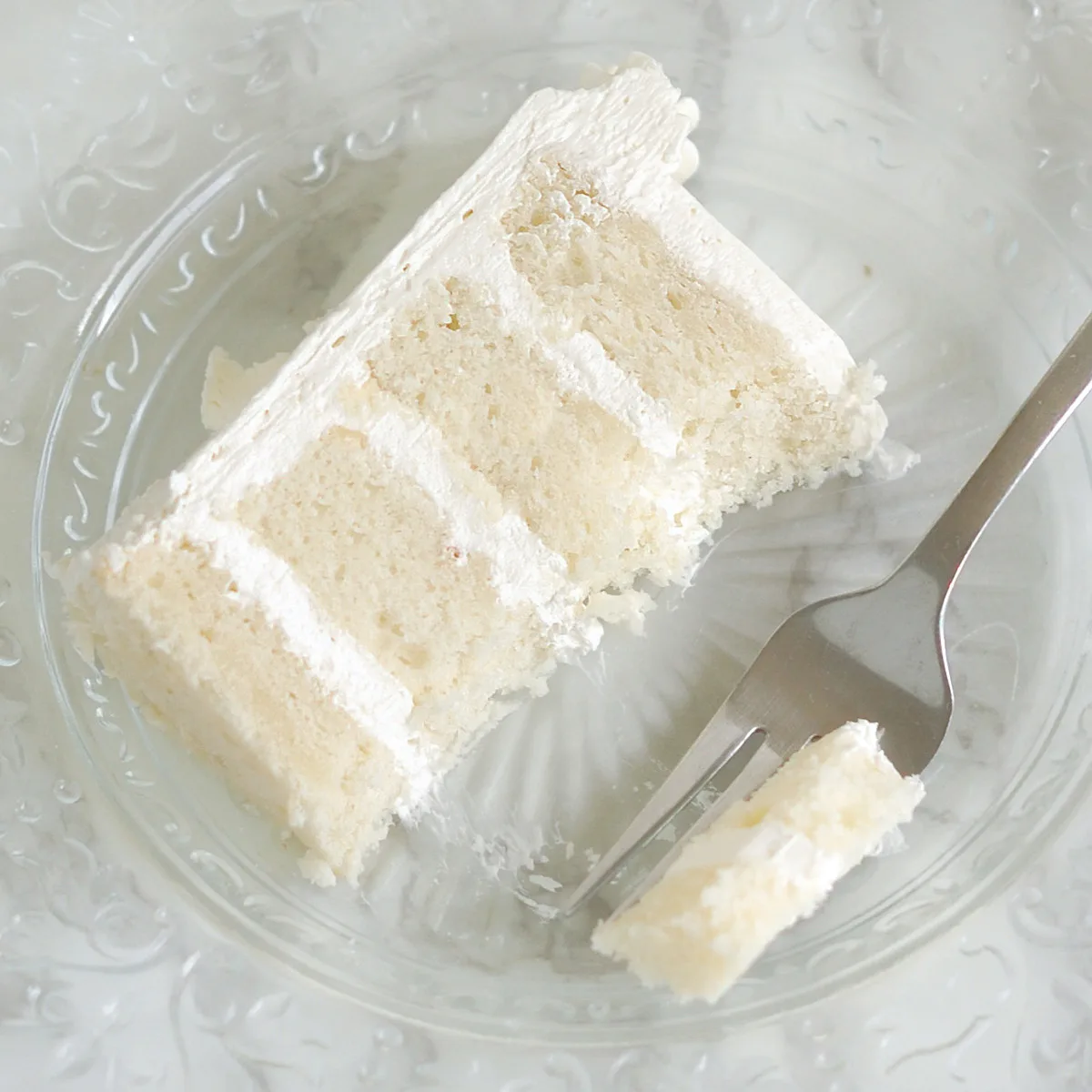
I’d like to make this using 10″ cake pans, can you tell me how to modify the recipe? Thank you!
Hi Brandi. I generally fill my pans 1/2 to 2/3 full with batter before baking. A 10″ pan can hold almost 2x as much batter as a 8″ pan (the exact amount may vary depending on the height of the pan). I would suggest you double the recipe and fill the pans no more than 2/3 full. Any extra batter can be baked as cupcakes.
Hi, I used your recipe to make a cake for a dinner party. There was a lot of shrinkage and one of the cakes broke in half while I was moving it to the cake rack. Not sure what I did incorrectly. I noticed other bakers are having an issue with shrinkage. You mentioned in several comments of “photos” posted to show what the shrinkage should look like, but I can’t seem to find them on the site. I was able to piece it back together after it completely cooled and used it as the bottom layer. Because of the break, it became a two-layer cake instead of a four-layer cake. With all that said, in addition to the tsp of vanilla extract called for in the recipe, I also added a half tsp of almond extract. The flavor was amazing! My guests loved the cake! This will be my go to white cake going forward. Thanks!
Hi Sabrina – there is a slideshow showing the cakes in the pan after they come out of the oven. It’s at the bottom of the post. If you moved the cakes while they were still warm that’s probably why they cracked. As I said before, this is a very tender cake and that is on purpose. But moving a very tender cake while it’s even a little warm can cause it to crack. What I do is flip the cake directly onto the cooling rack so I don’t have to move it until it’s completely cooled. Buttercream is our friend and can repair cracks beautifully. Glad you liked the flavor. I did change the recipe instructions for a longer cooling time in the pan. I’m pretty comfortable handling soft cakes since I’ve been doing it forever. But I should allow for more cooling time to prevent cracking. Thanks for the feedback.
How to adjust recipe for 4 layers as shown?
Hi Glenda, no need to adjust the recipe. I trim the tops off both cakes then split each cake into 2 layers for a total of 4 layers. You can watch the video in this post to see how I put together a 4-layer cake.
I just want to say after looking at hours and hours of cake recipes that this is by far the best one that I have seen and actually tried thank you for taking the time out to test different methods you are greatly appreciated
Thank you Crystal.
I had a bit of a problem with the recipe. I’m not sure what I did wrong. I ended up making a second batch cause I was unhappy with the first batch. They came out very flat. An inch thick. When I pulled it from the oven it was fluffy and firm looking. After it cooled all four cakes were flat. I followed everything to the T. 🙁
I can’t say what happened without knowing exactly how you made the recipe. The cakes do settle after they come out of the oven (see photos) but should not collapse to 1″ thick. Honestly, the raw batter is deeper than 1″. What size pans did you use? I just baked this recipe 3x last week with no problems.